Data centers seem like mysterious black boxes, but they power our digital lives. Not understanding what's inside can make decisions about them feel like guesswork. What really makes them tick?
A data center's core components include IT equipment (servers, storage, network gear), power infrastructure (UPS, generators, PDUs), cooling systems (HVAC, CRACs), and physical security measures, all housed in a specialized facility.
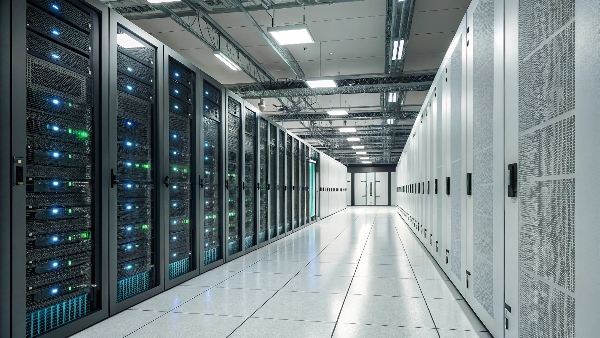
Transition Paragraph:
The IT industry's demand for data centers is growing incredibly fast. As someone who has spent 10 years at Daopulse manufacturing OEM/ODM uninterruptible power supplies (UPS), I've seen how these facilities have evolved. My insight is that understanding the intricate web of components within a data center is crucial for anyone involved in their design, procurement, or operation, especially for critical power systems. This knowledge helps us make better decisions to ensure reliability. So, let's open the doors and explore what truly makes up a modern data center.
What hardware does Google use in their data centers?
We all use Google, and their data centers are legendary. It's natural to wonder about the special hardware powering such a giant. Is it all super-secret custom tech?
Google designs much of its own server, storage, and networking hardware for efficiency and scale. While specifics are proprietary, they focus on optimized, power-efficient components tailored to their unique workloads.
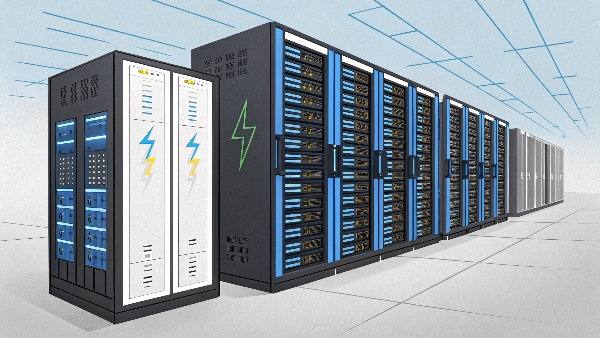
Dive deeper Paragraph:
It's true that tech giants like Google, Facebook (Meta), and Amazon design a lot of their own data center hardware. They operate at such a massive scale that even small improvements in efficiency or cost per unit can lead to huge savings. So, what does this custom hardware generally look like?
First, servers. Instead of buying off-the-shelf servers from traditional vendors, they often design their own motherboards, chassis, and even power supplies. These are optimized for their specific software and workloads. For example, they might strip out unnecessary components found in general-purpose servers to save cost and power. I remember a discussion with an engineer who mentioned how they even optimize the airflow within their custom server racks to work perfectly with their cooling systems, which is something we also consider when designing UPS solutions for varying thermal environments.
Second, storage. They build massive storage systems, often using commodity hard drives and flash storage, but with custom enclosures and management software. This allows them to scale their storage capacity incredibly and manage it efficiently.
Third, networking gear. The amount of data flowing within and between their data centers is staggering. So, they often design their own high-speed switches and routers to handle this traffic and reduce bottlenecks.
And then there's specialized hardware, like Google's Tensor Processing Units (TPUs) designed for machine learning. These custom chips accelerate AI workloads.
While much is custom, the underlying principles of needing reliable, clean power are universal. Even the most advanced custom server needs a stable power source, which is where robust UPS systems, like the CE, RoHS, and ISO certified ones we provide at Daopulse, become absolutely critical.
What is inside Google Data Center?
Beyond the custom hardware, what does the inside of a giant like Google's data center actually look like? It's more than just rows of computers; it's a whole ecosystem built for reliability.
Inside a Google data center, you'll find vast halls of custom server racks, intricate power distribution systems (including large-scale UPS units and backup generators), advanced cooling infrastructure, and multi-layered physical and cybersecurity.
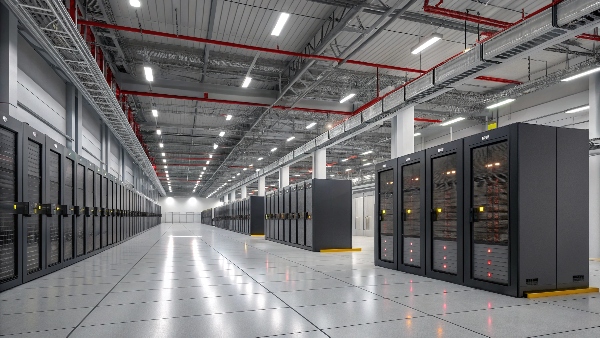
Dive deeper Paragraph:
Stepping inside a major data center, like one operated by Google, is an experience in scale and precision engineering. It’s not just the IT hardware; it's the entire supporting infrastructure that makes it all work.
1. The "White Space": This is where the IT equipment lives – thousands upon thousands of servers, storage arrays, and network devices neatly arranged in racks. These racks are often organized into hot and cold aisles to optimize cooling efficiency. I recall a visit to a facility where the sheer length of these aisles was mind-boggling.
2. Power Infrastructure: This is my area of expertise at Daopulse. Data centers have a massive power backbone.
- Utility Feeds: Often multiple high-voltage feeds from the grid.
- Transformers & Switchgear: To step down voltage and distribute power.
- Uninterruptible Power Supplies (UPS)1: Huge UPS systems, often modular and redundant (N+1, 2N), provide clean power and immediate battery backup. We manufacture both lead-acid and advanced lithium battery UPS solutions specifically for these demanding environments.
- Backup Generators: Large diesel generators stand ready to take over for extended outages.
- Power Distribution Units (PDUs)2: Rack-level PDUs distribute power to individual servers.
3. Cooling Systems: All that IT equipment generates a tremendous amount of heat. Sophisticated HVAC systems, including Computer Room Air Conditioners (CRACs) or Computer Room Air Handlers (CRAHs), chillers, and often innovative liquid cooling solutions, are used to keep temperatures within optimal ranges.
4. Security: Multi-layered security is paramount. This includes perimeter fences, biometric access controls, surveillance cameras, and on-site security personnel. Cybersecurity measures are equally robust.
5. Fire Suppression: Advanced fire detection and suppression systems3 (e.g., inert gas systems like Novec 1230) are in place to protect the valuable equipment without damaging it.
It's a complex environment where every component must work flawlessly. Procurement Managers at client companies often tell me that sourcing reliable, certified UPS systems is a top priority for them because a power failure can bring this entire, intricate ecosystem to a standstill.
Understand IT?
The term "IT" is broad, but in a data center, it refers to the core computing horsepower. What are these essential IT building blocks that make everything digital happen?
Data center IT infrastructure primarily consists of servers (for processing), storage systems (for data), and networking equipment (for connectivity). These elements work together to run applications and manage information.
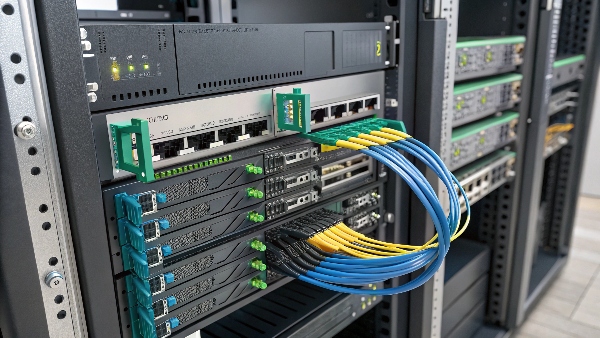
Dive deeper Paragraph:
When we talk about IT infrastructure within a data center, we are referring to the heart of its operations – the equipment that processes, stores, and moves data. As a UPS provider, Daopulse ensures these critical components always have power. Let's break them down:
1. Servers (Compute):
These are powerful computers, but unlike your desktop, they are typically rack-mounted and optimized for specific tasks.
- Types: You'll find web servers, application servers, database servers, virtualization hosts, and more.
- Function: They run the software and applications that businesses and users rely on, from hosting websites to processing complex calculations.
- Considerations: CPU cores, RAM, and processing speed are key. The power draw of high-density server racks is a major factor in UPS sizing. I remember a client who was upgrading to blade servers; we had to recalculate their entire UPS capacity due to the increased power density.
2. Storage Systems (Data):
Data is the lifeblood, and specialized systems are needed to store and manage it.
- Types: Network Attached Storage (NAS) for file-level access, Storage Area Networks (SAN) for block-level access, and increasingly, object storage for large, unstructured data.
- Media: This includes traditional Hard Disk Drives (HDDs) for capacity and Solid State Drives (SSDs) for speed.
- Function: They provide persistent storage for operating systems, applications, databases, and user files. Data integrity and availability are paramount, making reliable power from a UPS essential.
3. Networking Equipment (Connectivity):
This hardware connects everything.
- Types: Switches (connect devices within the local network), routers (connect different networks, including to the internet), firewalls (provide security), and load balancers (distribute traffic).
- Function: They create the pathways for data to flow between servers, storage, and out to users. High bandwidth and low latency are critical.
These three pillars – compute, storage, and network – form the core IT infrastructure. They are deeply interconnected. A failure in one can impact the others, and a power loss to any of them can be catastrophic, which is why our CE, RoHS, and ISO certified UPS solutions are so vital.
What are some causes behind data center outages?
Despite all the planning, data center outages still happen. They are costly and disruptive. Knowing the common culprits is the first step towards preventing them and ensuring business continuity.
Common causes of data center outages include power failures (utility, UPS, or generator issues), cooling system malfunctions, network problems, human error, cyberattacks, and natural disasters.
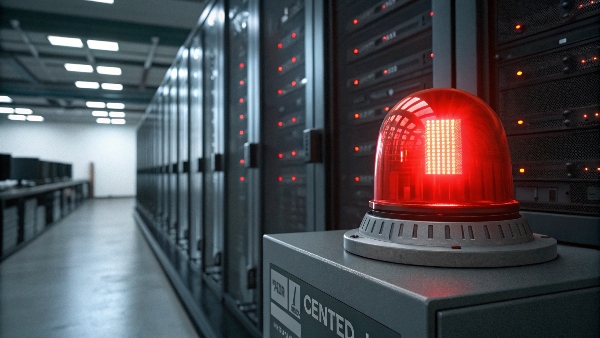
Dive deeper Paragraph:
Data center outages are the nightmare scenario for any organization. At Daopulse, we're acutely aware of how critical our UPS systems are in preventing many of these. Here are some of the main reasons outages occur:
1. Power Problems (The #1 Culprit):
- Utility Power Failure: The most obvious. This is what UPS systems are primarily designed to protect against.
- UPS Failure: Ironically, the UPS itself can fail if not properly maintained, if batteries are old, or if it's overloaded. This is why N+1 or 2N redundant UPS configurations are vital. Our team always emphasizes robust testing and maintenance schedules.
- Generator Failure: Backup generators might fail to start or transfer the load if not regularly tested and maintained.
- PDU/Circuit Breaker Issues: Problems within the internal power distribution can also cause localized outages.
2. Cooling System Failure:
- Servers generate immense heat. If CRAC units or other cooling systems fail, temperatures can rise rapidly, forcing an emergency shutdown to prevent equipment damage. I've heard stories from clients where a single cooling unit failure cascaded into a wider problem.
3. Network Issues:
- Failures in core network components like routers or switches, or even fiber optic cable cuts, can isolate the data center or parts of it.
4. Human Error:
- Accidental disconnections, incorrect configurations, or procedural mistakes can, unfortunately, bring down systems. This highlights the need for clear protocols and training.
5. Cyberattacks:
- Distributed Denial of Service (DDoS) attacks can overwhelm network capacity, while ransomware or other malware can cripple systems.
6. Natural Disasters:
- Events like floods, earthquakes, or hurricanes can cause widespread physical damage.
Understanding these causes helps Procurement Managers and System Integrators focus on prevention. For power-related issues, investing in high-quality, certified UPS systems with appropriate redundancy, like our lead-acid and lithium battery solutions, is a fundamental step in safeguarding uptime.
Conclusion
Data centers are complex ecosystems. Their IT hardware, power, cooling, and security components must work together flawlessly. Understanding these parts is key to ensuring the digital world keeps running smoothly.
-
Explore how UPS systems ensure continuous power and protect critical data center operations from outages. ↩
-
Learn about the role of PDUs in efficiently distributing power to servers and optimizing energy use. ↩
-
Discover advanced fire safety solutions that protect valuable equipment and ensure operational continuity. ↩

